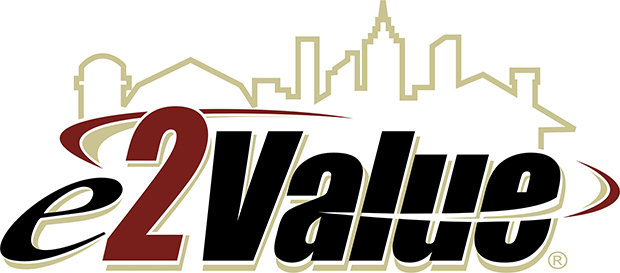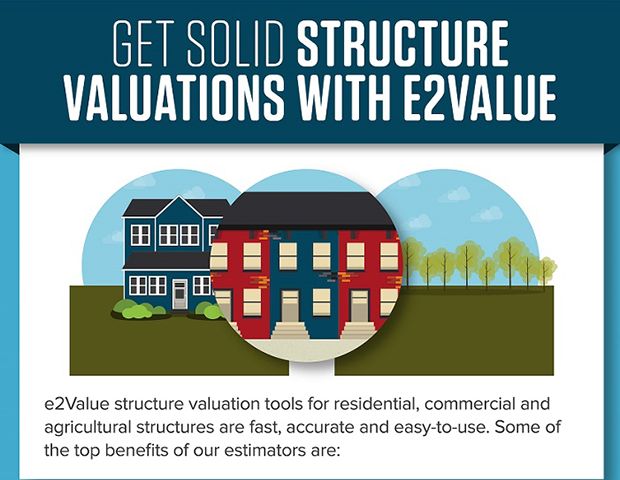Below is our recent interview with Todd Rissel, CEO at e2Value:

Q: What are the benefits of choosing e2Value for property valuation needs?
A: e2Value offers easy-to-use, fast access to data and provides values expected at the time of a property loss. We have terabytes of data about structures in the USA and Canada to help us in that effort. At every step in the property insurance chain, good, accurate data is needed to determine the best rate or options to insure a structure. Ease of use of any process in the chain is critical to connect the information from the end user to the decision maker. Further, each submission should be subject to standardized, consistent rules to ensure the data and values can be counted on to be relevant and reported the same way each time, every time.
If a carrier or MGA has a rate plan based on certain data and performance of the structures in modeling, or planning, their performance metrics rely on consistent and standardized data. It is similar to golf where golfers have different clubs for the tee, the fairway and the green. His or her game is measured in each category. You cannot adjust a putting game with the driver or adjust your drive with the putter. To get the ball through the windmill and win the prize at mini golf, a person’s skills on the tee will not matter.
If structures perform differently at various values, you must establish the right values. If you don’t know the exposure, the rate will never matter.
e2Value helps provide the right data and values in the process in order to result in the best assessment, measurement and rating of exposures.
 Recommended: Otodata – A Key Player In The Tank Monitoring Industry
Recommended: Otodata – A Key Player In The Tank Monitoring Industry
Q: How has COVID-19 impacted your business and the real estate/insurance market in general?
A: That’s a broad question. All real estate is local and the impact of COVID-19 will be felt very differently based on the economic realities where that real estate is located. If possible, perhaps people will relocate from cities to suburbs. I can imagine that it may be tough being in an apartment in a city for 90 days. As companies move to let their employees work from home, vast amounts of office space may join malls in becoming less in demand.
For e2Value, we have been touched personally by COVID. It is a stark reminder of what the world faces. All our lives changed in 2020 and returning to normal will mean a very different “normal” than we had before COVID.
We are also mindful of those who have lost loved ones, are recovering from the illness and those who are suffering from job losses while they rebuild. Many friends have found themselves unemployed, for now.
Obviously, the impact of these market and life shifts will be felt for years to come. We believe in the human spirit and know we can successfully face many challenges.
As a business, we have to show clients that we have a pandemic plan and knew how to operate successfully in a new environment. The proof is we have successfully done so. We have a great team that built tools based on remotely developing and delivering data about a structure for rating, underwriting and measurement, without needing to be physically present at the structure.
Our clients have the tools they need to work in the current and future environments. We gained several new clients as they needed processes for the “new normal.”
Again, with proper reverence to our personal losses and friends who have had their lives disrupted, our business has continued to do well.
Q: Does insurtech threaten the established insurance industry? What are the real benefits of incorporating technology into the insurance industry?
A: I’m not sure anything should or would threaten the insurance industry. I think “Insurtech” is just digitalization of a manual process. The industry will embrace that at varying speeds and wholeheartedly.
Maybe a new “carrier” will take business from an incumbent. But I’m not sure for how long. Insurance companies—full-stack companies—need a balance sheet and a policyholder surplus. It’s doubtful that you can invest your way to a surplus. There has been lots of press on a few “disrupters.” The question is can they sustain a 180 combined for long? There is no surplus in a 180 combined! At that point will their backers be happy sustaining that? Programs come and programs go.
Let’s look at a disrupter in another industry. JetBlue started flying in 2000. The planes were new, the fleet needed no maintenance. The crews were excited. Twenty years later, they are now a regular airline. They are 1/3 the revenue of Southwest with much less profit. The planes got old and the crews make more money now. They are, now, another airline surviving on a brand and margins. It’s all good until you have a pandemic. The question is whether they can survive this downturn. Can they continue to be a standalone company? Would they need to become part of Southwest or United?
As a new carrier with no legacy systems, claims overhead or IBNR surprises—for example an asbestos claim or two—life is good. In those legacy systems, claims knowledge and brand, however, may mean the ability to survive a downturn or two. The legacy is tied to a surplus. Legacy might have been perceived as an anchor in 2019, but in 2020 it might be a life preserver.
Technology will be used. Better, faster, cheaper will be embraced. The issue is that the profit margins carriers use to pay for those improvements are thin. Apple and Google have huge profit margins, but no legacy. No surplus is needed for them. However, they must continue to innovate and expand. If a top 25 carrier went flat on revenue or maybe negative for a year, they can still have a nice profit margin and not suffer a huge stock price drop. No giant upswings, no big downswings. If Google or Apple have a down year, they can still make a profit, but they may lose some luster and that impacts their stock.
Uber and Airbnb are great tech and growth stories—until they are not. All the technology in the world won’t help when everyone is at home for a year. A ride in a car lasts only as long as a ride in a car. They should be able to scale back up as quickly as needed, but will their markets? Insurance, for even and hour Uber driver, can have a long tail after that hour. The business has scaled down, but there is still liability and maybe potential liability has increased.
To win is simple for the insurtech world: allow more precise rating, faster processes, lower cost and help mitigate claims. There is only the loss side and the expense side. Oh yeah, and some exposures won’t be known for three or four years. Monies set aside in surplus may not be enough for a hurricane or two. What if a hurricane hits, with a pandemic and a wildfire, maybe tornadoes and hail?
Tech is easy compared to managing risk. There’s no doubt that carriers old, new and in-between can benefit from efficiencies, better data, better decisions. It all must balance with the cost and the downside. Software can be replaced. A surplus is hard to replace. I forget which book it is from, maybe Gold Coast, but “Don’t spend the principal.” is sage advice.
 Recommended: FluxCredit Helps Indebt Americans Resolve Their Financial Woes
Recommended: FluxCredit Helps Indebt Americans Resolve Their Financial Woes
Q: What are some of the main objectives for e2Value in 2020 and how do you plan to achieve them?
A: The exciting thing for us is that the world wants what we have: better data and better values. Better precision. Lower costs. Ease of use. Every day it gets better. We now have 20 years of data, experience and intellectual assets to help our current and new clients.
One of our partners, Willis Towers Watson, took our data and made a product, the Structure Insurance Score, from it. Other carriers and consultants can do the same. The digitization of the carriers allows them to take greater and greater advantage of our offerings as well as other “micro-services” that they can blend into their heritage, expertise, and IP.
2020 has brought a pause in some respects, but also opportunities. We can fuel contactless visits, augmented underwriting, and parametric insurance. We can help in the future as well as help a broker place coverage for their client’s most valuable assets. Having more time to watch movies, I caught A Bridge Too Far. It is about the push by the Allies from Normandy into Germany to “end the war by Christmas.” The tragedy is (I’m not giving any plot away since it’s in the title) success was the precursor to failure. Hubris led the planning. There was no room for more data, better data, change of course due to more or better data, and contingencies. Many people paid for those decisions with their lives. Everyone had the answers. Everyone “knew” what would happen. That was, of course, until they didn’t. The planners and top generals made irreversible decisions. Insurtech can win if it isn’t an irreversible decision.
What we represent and can provide for all sides of the equation—markets, carriers, brokers, wholesalers, MGAs, insurers, reinsurers, insurtech, legacy, etc.—is we can be used a little or a lot. Nothing we offer is “irreversible.” We can help with augmented, parametric, modeling, new rate tools, or helping insure a home, apartment, or office building.
Much of what we’ve achieved is because our clients are our best salespeople. They want us to deliver X and we deliver X. Often we deliver X+. So, they can set it and forget it, knowing that our business works the way they need it to work. They can then move on to the next area that needs their attention. We help our clients focus on what matters. As we like to say, technology that works.
Activate Social Media:


